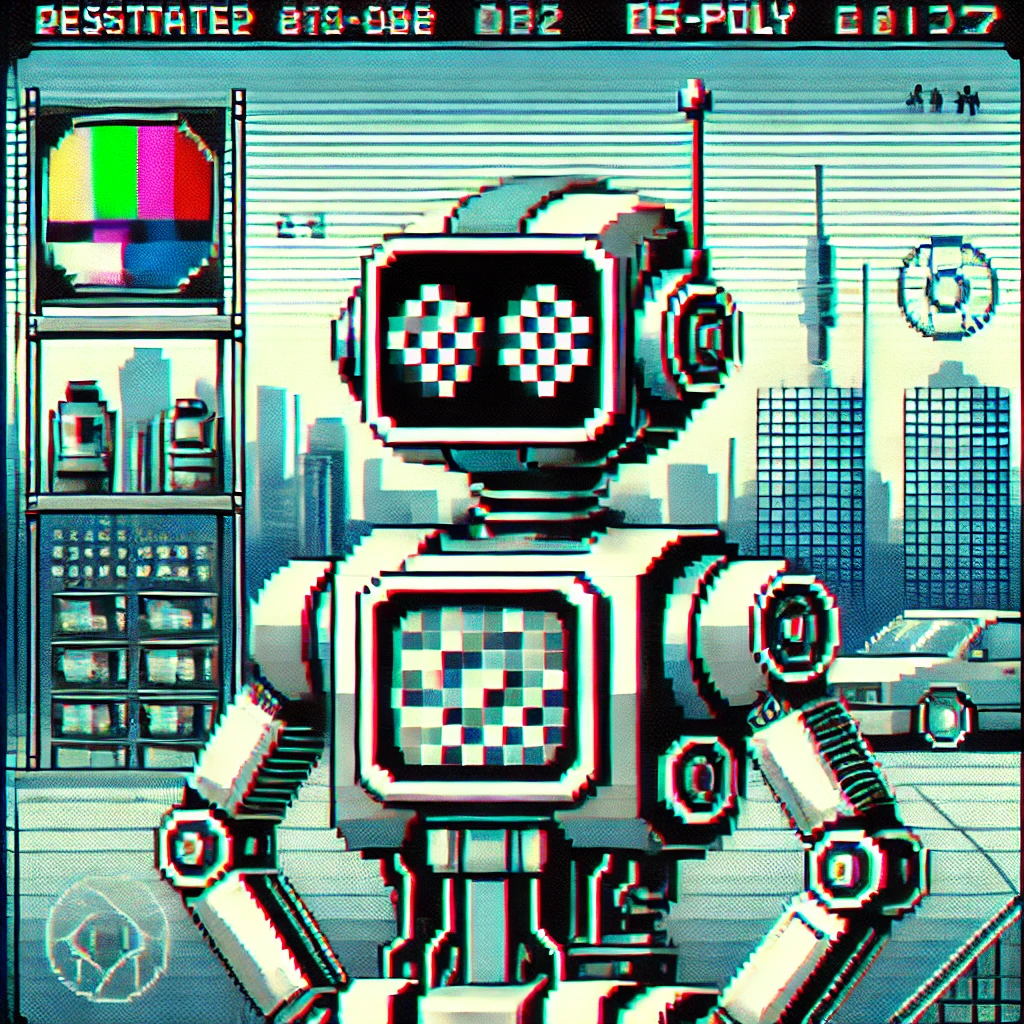In the ever-evolving world of gaming, technology continues to break new ground, offering players experiences that were once deemed impossible. Among these technological advancements, PS2 Filter AI has emerged as a groundbreaking innovation, breathing new life into retro games and enhancing modern gaming graphics. This article delves into the transformative power of PS2 Filter AI, exploring its impact on the gaming industry and its potential to revolutionize the way we experience games.
Understanding PS2 Filter AI
At its core, PS2 Filter AI is an artificial intelligence technology designed to enhance the visual quality of PlayStation 2 (PS2) games. By utilizing machine learning and neural networks, this AI-driven filter improves graphics by upscaling textures, enhancing resolutions, and refining image quality. The result is a smoother, more immersive gaming experience that maintains the nostalgic charm of classic games while bringing them closer to modern visual standards.
The primary function of PS2 Filter AI is to automatically apply advanced filtering techniques to the game’s graphics, transforming them in real-time as players navigate through their favorite titles. This seamless integration allows gamers to enjoy enhanced visuals without the need for extensive modifications or hardware upgrades.
The Role of AI in Gaming
Artificial intelligence has become an integral part of the gaming industry, transforming the way games are developed, played, and experienced. AI technologies have permeated various aspects of gaming, from character behavior and decision-making to dynamic environments and personalized experiences.
AI-driven enhancements in games have led to more realistic and immersive experiences. Intelligent NPCs (non-playable characters) now exhibit human-like behavior, adapting to player actions and creating dynamic interactions. Procedural generation algorithms powered by AI enable developers to create vast and intricate game worlds with minimal manual intervention.
In the context of graphics, AI technologies like PS2 Filter AI play a pivotal role in improving the visual fidelity of games, ensuring that players can enjoy high-quality graphics without compromising performance.
Graphics and AI: A Dynamic Duo
The synergy between graphics and AI has unlocked new possibilities for gaming, enabling developers to push the boundaries of visual excellence. AI technologies are leveraged to enhance graphics through various techniques:
- Texture Upscaling: AI algorithms analyze low-resolution textures and generate higher-resolution versions, improving detail and clarity. This process, known as super-resolution, enhances the overall visual quality of games.
- Resolution Enhancement: AI-powered upscaling allows games to be rendered at higher resolutions, providing players with a crisper and more detailed visual experience.
- Image Restoration: AI can remove artifacts and imperfections from images, resulting in cleaner and more polished graphics.
By utilizing AI-driven techniques, developers can create visually stunning games that captivate players and transport them into immersive worlds.
The Evolution of AI in Gaming
The integration of AI in gaming has been a gradual journey, marked by significant milestones and breakthroughs. Understanding the evolution of AI in gaming provides valuable insights into the development of PS2 Filter AI.
- Early AI Implementations: The earliest forms of AI in gaming were simple algorithms used to control enemy behavior. These early implementations laid the groundwork for more sophisticated AI systems.
- Introduction of Neural Networks: The advent of neural networks revolutionized AI in gaming, enabling more complex decision-making and pattern recognition. Neural networks allowed AI to learn from data and adapt to various scenarios.
- Real-Time AI Processing: Advances in computing power and machine learning techniques enabled real-time AI processing, allowing games to dynamically respond to player actions and environmental changes.
- AI in Graphics Enhancement: The application of AI to graphics enhancement marked a significant turning point. AI algorithms could analyze and improve visual elements, resulting in more realistic and immersive gaming experiences.
Technical Aspects of PS2 Filter AI
PS2 Filter AI is powered by sophisticated algorithms and technologies that enable it to enhance graphics effectively. Understanding the technical aspects of PS2 Filter AI sheds light on its capabilities and potential.
- Machine Learning Algorithms: At the heart of PS2 Filter AI are machine learning algorithms that analyze and learn from patterns in graphics data. These algorithms can identify areas that require enhancement and apply appropriate filtering techniques.
- Neural Networks: Neural networks are a key component of PS2 Filter AI, allowing it to process complex data and generate high-quality outputs. Convolutional neural networks (CNNs) are particularly effective in image recognition and enhancement tasks.
- Data-Driven Training: PS2 Filter AI undergoes extensive training using large datasets of images and textures. This training enables the AI to recognize patterns and make informed decisions when enhancing graphics.
- Real-Time Processing: The ability to process graphics in real-time is a crucial feature of PS2 Filter AI. It ensures that players experience enhanced visuals seamlessly as they play, without noticeable delays or disruptions.
Impact of PS2 Filter AI on Retro Games
PS2 Filter AI has a profound impact on retro games, breathing new life into beloved classics and providing players with a fresh perspective on nostalgic titles. By enhancing the visual quality of retro games, PS2 Filter AI achieves a delicate balance between preserving the original charm and introducing modern enhancements.
- Visual Refresh: Retro games often suffer from outdated graphics that can deter modern players. PS2 Filter AI revitalizes these games by enhancing textures, resolutions, and overall visual appeal.
- Preserving Nostalgia: While enhancing graphics, PS2 Filter AI remains mindful of preserving the nostalgic elements that make retro games special. The AI carefully balances improvements with respect for the original art style and design.
- Accessibility: By improving the visual quality of retro games, PS2 Filter AI makes them more accessible to new generations of players. Younger audiences can appreciate classic titles with modernized graphics that meet their visual expectations.
Challenges and Limitations
Despite its impressive capabilities, PS2 Filter AI faces certain challenges and limitations that impact its implementation and effectiveness.
- Technical Challenges: The complexity of AI algorithms and the need for extensive training data pose technical challenges. Ensuring real-time processing without compromising performance requires significant computational resources.
- Ethical Considerations: AI-driven enhancements raise ethical questions about the preservation of original game art and the potential for altering creative intent. Striking a balance between enhancement and authenticity is a delicate task.
- Compatibility Issues: Not all games may be compatible with PS2 Filter AI, especially those with unique graphical styles or proprietary technologies. Ensuring compatibility across a wide range of titles is an ongoing challenge.
Future of AI in Gaming Graphics
The future of AI in gaming graphics holds exciting possibilities and innovations that promise to redefine gaming experiences. Several trends and developments are shaping the trajectory of AI in this domain.
- Real-Time Ray Tracing: AI-powered real-time ray tracing is poised to revolutionize lighting and reflections in games, creating stunningly realistic visuals. The integration of AI with ray tracing technology enhances the accuracy and efficiency of rendering.
- AI-Driven Content Generation: AI technologies are increasingly being used to generate content procedurally, enabling developers to create expansive game worlds with rich and diverse environments.
- AI-Powered Personalization: AI is being leveraged to deliver personalized gaming experiences, tailoring content, difficulty levels, and interactions to individual players based on their preferences and behavior.
- Cross-Platform Integration: The seamless integration of AI across different platforms and devices will enable players to enjoy enhanced graphics and experiences regardless of their chosen platform.
Case Studies of Successful Implementations
Examining real-world examples of PS2 Filter AI implementations provides valuable insights into its impact and potential.
- Final Fantasy X: The remastered version of Final Fantasy X utilized AI-driven enhancements to improve textures and resolutions, resulting in a visually stunning experience that captured the essence of the original game while introducing modern visual elements.
- Silent Hill 2: The reimagined version of Silent Hill 2 employed PS2 Filter AI to enhance atmospheric effects, lighting, and textures, elevating the horror experience and immersing players in its haunting world.
- Shadow of the Colossus: The remake of Shadow of the Colossus demonstrated the power of AI-driven graphics enhancements, delivering breathtaking visuals that stayed true to the original’s artistic vision.
FAQs
What is PS2 Filter AI, and how does it work?
PS2 Filter AI is an artificial intelligence technology designed to enhance the visual quality of PlayStation 2 games. It utilizes machine learning and neural networks to upscale textures, improve resolutions, and refine image quality, resulting in a smoother and more immersive gaming experience.
How does PS2 Filter AI improve retro games?
PS2 Filter AI enhances retro games by improving textures, resolutions, and overall visual appeal. It strikes a balance between preserving the nostalgic elements of classic games and introducing modern enhancements that make them more accessible to new audiences.
What challenges does PS2 Filter AI face in implementation?
PS2 Filter AI faces technical challenges related to algorithm complexity, training data requirements, and real-time processing. Additionally, ethical considerations arise regarding the preservation of original game art and creative intent.
What are the future trends in AI for gaming graphics?
Future trends in AI for gaming graphics include real-time ray tracing, AI-driven content generation, AI-powered personalization, and cross-platform integration. These developments promise to redefine gaming experiences and push the boundaries of visual excellence.
How has PS2 Filter AI been successfully implemented in games?
PS2 Filter AI has been successfully implemented in remastered and reimagined versions of games such as Final Fantasy X, Silent Hill 2, and Shadow of the Colossus. These implementations have resulted in enhanced visuals that capture the essence of the original games while introducing modern improvements.
What impact does AI have on gaming experiences beyond graphics?
Beyond graphics, AI impacts gaming experiences by enhancing character behavior, procedural generation, personalized content, and dynamic interactions. AI-driven technologies create more realistic, immersive, and engaging gameplay experiences for players.
Conclusion
The emergence of PS2 Filter AI represents a significant milestone in the gaming industry, offering a glimpse into the future of graphics enhancement and AI-driven experiences. By breathing new life into retro games and pushing the boundaries of visual excellence, PS2 Filter AI showcases the potential of AI technologies to transform the way we play and experience games. As the gaming landscape continues to evolve, embracing AI-driven innovations like PS2 Filter AI will be key to delivering unforgettable experiences that captivate players and redefine the art of gaming.











